A top-level domain (TLD) is one of the domains at the highest level in the hierarchical Domain Name System of the Internet after the root domain. The top-level domain names are installed in the root zone of the name space. For all domains in lower levels, it is the last part of the domain name, that is, the last non empty label of a fully qualified domain name. For example, in the domain name www.example.com, the top-level domain is .com. Responsibility for management of most top-level domains is delegated to specific organizations by the ICANN, an Internet multi-stakeholder community, which operates the Internet Assigned Numbers Authority (IANA), and is in charge of maintaining the DNS root zone.

In the Internet, a domain name is a string that identifies a realm of administrative autonomy, authority or control. Domain names are often used to identify services provided through the Internet, such as websites, email services and more. Domain names are used in various networking contexts and for application-specific naming and addressing purposes. In general, a domain name identifies a network domain or an Internet Protocol (IP) resource, such as a personal computer used to access the Internet, or a server computer.
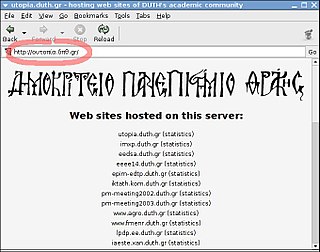
An internationalized domain name (IDN) is an Internet domain name that contains at least one label displayed in software applications, in whole or in part, in non-Latin script or alphabet or in the Latin alphabet-based characters with diacritics or ligatures. These writing systems are encoded by computers in multibyte Unicode. Internationalized domain names are stored in the Domain Name System (DNS) as ASCII strings using Punycode transcription.
A country code top-level domain (ccTLD) is an Internet top-level domain generally used or reserved for a country, sovereign state, or dependent territory identified with a country code. All ASCII ccTLD identifiers are two letters long, and all two-letter top-level domains are ccTLDs.

.ae is the country code top-level domain (ccTLD) in the Domain Name System of the Internet for the United Arab Emirates. It is administered by .aeDA which is part of the Telecommunications and Digital Government Regulatory Authority of UAE (TDRA).
.sa is the Latin alphabet Internet country code top-level domain (ccTLD) of Saudi Arabia. Domains of this type can be registered through SaudiNIC, a department of the Communications and Information Technology Commission. The Arabic alphabet ccTLD of Saudi Arabia is السعودية.
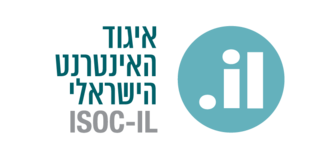
.il is the Internet country code top-level domain (ccTLD) of Israel, administered by the Israel Internet Association and managed by NIC - ISRAEL, which hosts the DNS root server and manages the Israeli Internet Exchange, that supports IPv4 and IPv6.

.sg is the Internet country code top-level domain (ccTLD) for Singapore. It was first registered in September 1988. It is administered by the Singapore Network Information Centre. Registrations are processed via accredited registrars.
The Canadian Internet Registration Authority (CIRA) is the organization that manages the .ca country code top-level domain (ccTLD) for Canada. Its offices are located at 979 Bank Street in Ottawa, Ontario, Canada. CIRA sets the policies and agendas that support Canada's internet community and Canada's involvement in international internet governance. It is a member-driven organization with membership open to all that hold a .ca domain. As of March 2023, there were more than 3.3 million active .ca domains.
A sponsored top-level domain (sTLD) is one of the categories of top-level domains (TLDs) maintained by the Internet Assigned Numbers Authority (IANA) for use in the Domain Name System of the Internet, alongside country-code top-level domains (ccTLD) and generic top-level domains (gTLD).
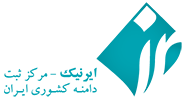
.ir is the Internet country code top-level domain (ccTLD) for Iran. It is managed by the Institute for Research in Fundamental Sciences.

.la is the Internet country code top-level domain (ccTLD) for Laos.
.pk is the designated Internet country code top-level domain (ccTLD) for Pakistan. PKNIC is the only organization endorsed by the Government of Pakistan to undertake the administration of 'pk' domain names. PKNIC is a non-profit making, non-statutory, member-based corporation established in June 1992.
The internationalized domain name (IDN) homograph attack is a way a malicious party may deceive computer users about what remote system they are communicating with, by exploiting the fact that many different characters look alike. For example, the Cyrillic, Greek and Latin alphabets each have a letter ⟨o⟩ that has the same shape but different meaning from its counterparts.
Single-letter second-level domains are domains in which the second-level domain of the domain name consists of only one letter, such as x.com. In 1993, the Internet Assigned Numbers Authority (IANA) explicitly reserved all single-letter and single-digit second-level domains under the top-level domains com, net, and org, and grandfathered those that had already been assigned. In December 2005, ICANN considered auctioning these domain names.
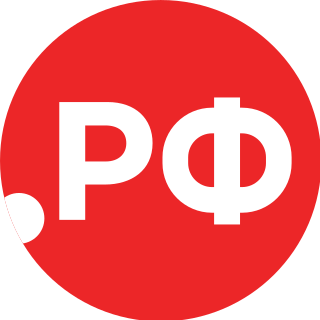
The domain name .рф is the Cyrillic country code top-level domain for the Russian Federation, in the Domain Name System of the Internet. In the Domain Name System it has the ASCII DNS name xn--p1ai. The domain accepts only Cyrillic subdomain applications, and is the first Cyrillic implementation of the Internationalizing Domain Names in Applications (IDNA) system. The domain became operational on 13 May 2010. As of 2014 it is the most used internationalized country code top-level domain, with around 900,000 domain names.
An internationalized country code top-level domain is a top-level domain in the Domain Name System (DNS) of the Internet. IDN ccTLDs are specially encoded domain names that are displayed in an end user application, such as a web browser, in their language-native script or alphabet, such as the Arabic alphabet, or a non-alphabetic writing system, such as Chinese characters. IDN ccTLDs are an application of the internationalized domain name system to top-level Internet domains assigned to countries, or independent geographic regions.
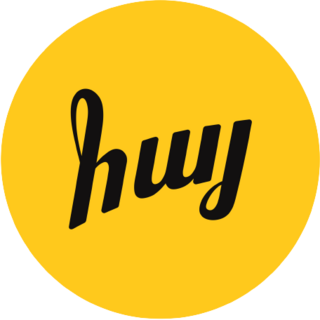
.հայ is an internet country code top-level domain (ccTLD) for Armenia, designated for two-letter country code AM, intended for domain names in the Armenian language.
The Swedish Internet Foundation is an independent public-service organisation that acts to ensure positive development of the internet. The foundation is based in Sweden and is responsible for the internet's Swedish top-level domain, .se, and the operation of the .nu top-level domain, that of Niue. It is also a public-service organization that operates identity federations, which comprise secure and scalable solutions for account and password management. These create the preconditions to facilitate work with digital processes within healthcare and schools in Sweden.









